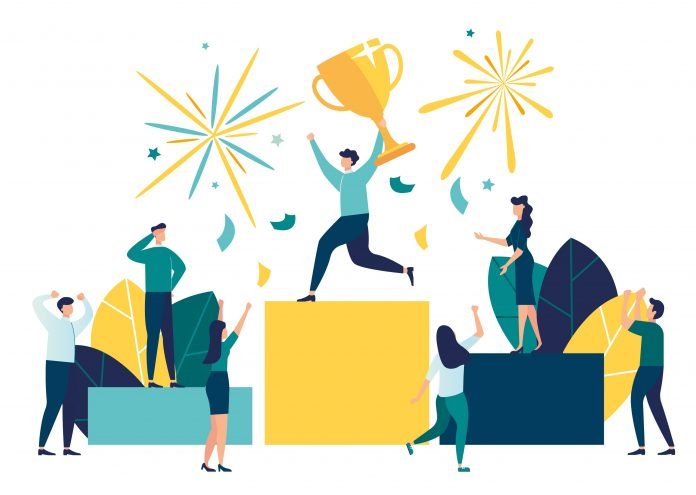Last Updated on July 11, 2024 by Asfa Rasheed
The pandemic put every facet of keeping employees motivated and connected to the workplace to the test. Employees are unsure of what to anticipate next, while businesses are anxious about the business’s long-term viability. Employers valued and appreciated their staff in supporting their firm while many others were forced to close due to global economic and societal instability.
The problems of this pandemic will have a long-term impact on how businesses engage with their employees and implement employee experience strategies. Indeed, businesses have learned how effective a simple solution like rewards and recognition (R&R) can be in making their staff feel valued. To reinvent the way their workers interact, corporations dramatically transformed their work procedures and concentrated on humanizing the R&R process. New R&R trends have also gained traction, such as personalization of rewards, gamification of R&R systems, and peer-to-peer recognition.
Here’s a quick rundown of the top few R&R priorities.
Table of Contents
Encourage employee communication and collaboration on a single platform
It got more difficult to stay connected with teammates as teams got more demographically diverse and emotionally detached. As moments of achievement and celebration were widely shared through the newsfeed, the recognition platform played a critical role in stimulating interactions between peers.
The R&R platform will continue to act as a means of communicating with employees about important company news and announcements. It will also be a useful tool for HR managers and executives to conduct frequent surveys and create an open platform for employees to submit input.
Obtaining feedback – The Voice of the Employee technique
Employers have struggled to grasp how employees are feeling since the outbreak and have been unable to assess employee engagement and satisfaction in their real sense. Companies were able to design people-centric strategies to increase overall performance and work quality while also promoting a healthy work environment by using an employee recognition platform to collect feedback and conduct pulse surveys on a regular basis.
This will improve employee satisfaction and workplace culture, as well as increase productivity and efficiency and improve business processes and outcomes. An advanced VoE system will also give senior leaders with actionable information and recommendations that they may implement at the team or company level.
Workplace diversity and inclusion (D&I) should be promoted
Though diversity and inclusion have been a hot topic for a while, the events of 2020 aided in the acceptance of such measures in the workplace. As D&I become more widespread, recognition solutions will use technology to make peers and the platform smarter, ensuring that there is no unconscious prejudice toward employees and in how a gesture of gratitude is conveyed.
A growing number of businesses will place a greater emphasis on diversity and inclusion (D&I) based on gender and gender identity, ethnicity and color, religion, sexual orientation, and other social variables, and will include these principles into the R&R platform. This will also include using D&I KPIs to track team behavior.
Utilizing the power of integrations and open APIs
Demand for integration of video conferencing and team collaboration apps like Google Meets, Microsoft Teams, and Zoom with R&R platforms expanded as the user base for these apps grew. Managers and peers were able to send commendations in the middle of a project, which encouraged timely praise of excellent performance.
It’s intended to pave the way for a genuinely integrated R&R platform, with possibilities to link with communication platforms like G Suite, Outlook, and Slack, HCM and HRIS systems, and other employee engagement solutions like employee wellness, engagement analytics, and so on.
Focus more on the health and well-being of employees
The COVID-19 outbreak compelled businesses to pay close attention to employee well-being and health. While a lack of work-life balance was definitely a major issue, isolation and loneliness had a significant impact on employees’ ability to work and succeed. Employees were affected by issues such as mental health, burnout, and stress, which resulted in a loss of productivity and a decline in the quality of work delivered.
Recognizing that their most valuable asset is their people, businesses will continue to embrace solutions that will improve their health and well-being. Employees’ emotional and physical health will be addressed, and technology will be used to connect them with fitness instructors and online counselors.
The major theme will be the R&R program’s long-term viability. The program’s capability will be defined by its simplicity of use, installation, and ability to support businesses and employees during a pandemic.
From a service provider standpoint, the pandemic prompted firms to take a far more employee-centric approach and to expedite development plans. It also put the existing program to the test in terms of serving a demographically diverse and geographically dispersed workforce. As firms establish new tactics to create large-scale cultural improvement, the lessons acquired will continue to serve as a guiding light for product development teams.
Read More: Major obstacles, when it comes to the implementation of bionic prostheses.
